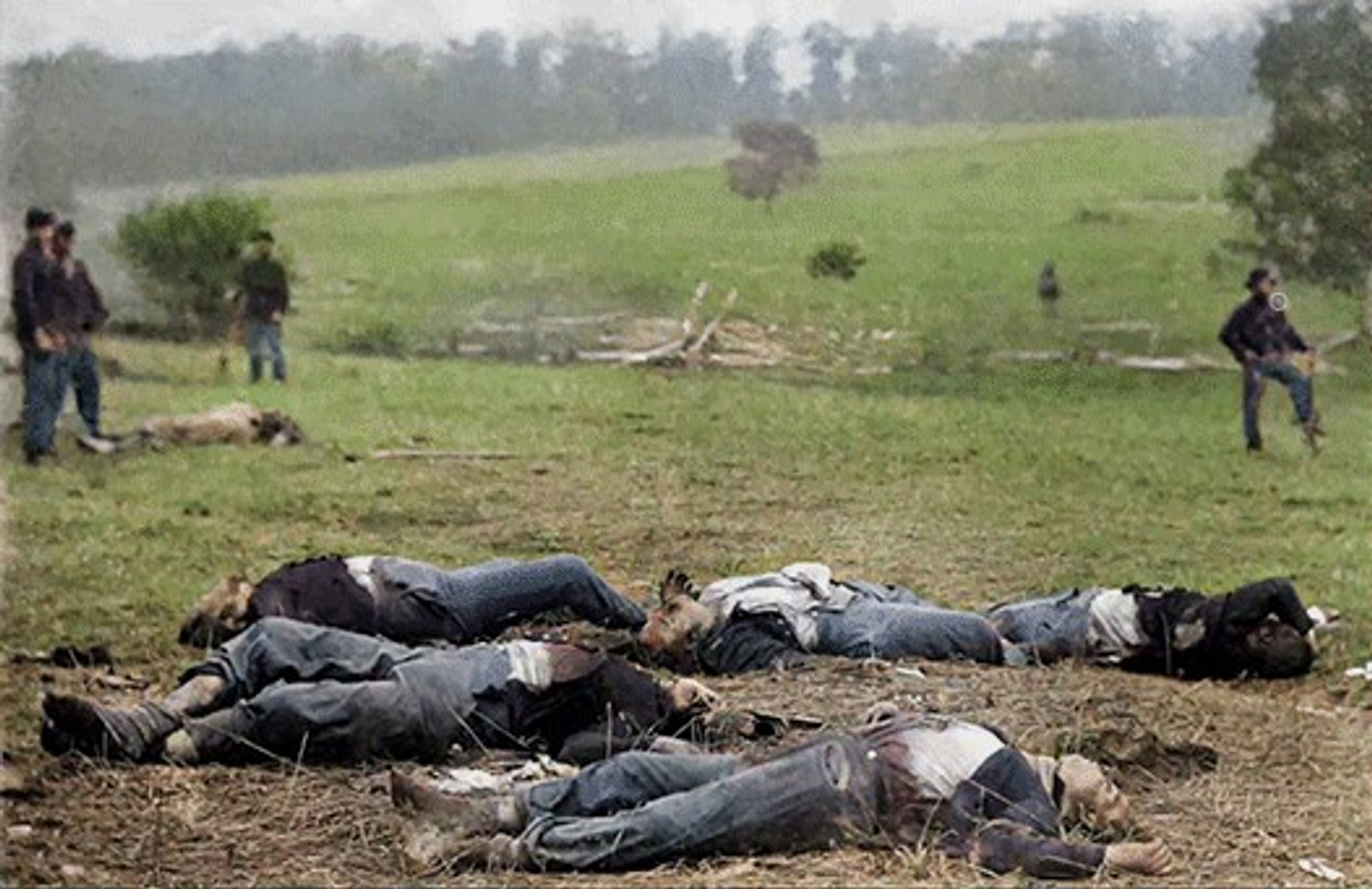A lingering mystery about a gruesome Gettysburg photograph has finally been solved with the help of artificial intelligence. The image may also be the only photograph of its kind.
“Initially, I had no intention of making this discovery, but elements kept falling into place,” explains Patrick Brennan, the man responsible for figuring out where one of the most famous photographs of dead soldiers was taken on the sprawling battlefield. The Chicago-area resident is a long-time editorial advisor for The Civil War Monitor magazine and an author under contract with trade publisher Savas Beatie for his forthcoming book Gettysburg in Color (July 2022).
One of the most iconic Gettysburg death images is Timothy O’Sullivan’s “View in field on right wing.” Most have long assumed O’Sullivan took the photo on the southern portion of the field. “The main problem with that thesis,” adds Brennan, “is that the ridge in the background doesn’t match the topography of the battlefield. It’s been a mystery for more than 150 years.”
A series of fortuitous discoveries helped unlock the puzzle. Brennan used an artificial intelligence-based computerized color identifier to determine the color of the uniforms. “The discovery that it included both Union and Confederate dead opened up an entirely new way of looking at the image.” Union dead still on the field at this late date suggested it had been taken much farther north and behind Confederate lines.
A burial map suggested a more precise location, and multiple days of field analysis by Brennan and Gettysburgers John Kammerer (Monumental Photography Gallery) and John Peterson (The Horse Soldier) narrowed the search. “We were pretty sure we had the right spot,” explains Brennan, “but the ridge in the background was wrong. John Kammerer was the first to wonder if the ridgeline had changed radically since the battle.” To compensate for changes to the historic landscape, Brennan hired Chicago 3D artist Zachary Lindemann to recreate a specific part of McPherson Ridge from the 1868 Warren topographic map of the battlefield. The O’Sullivan photo matched the 3D image perfectly. “I was pretty sure before, but the three-dimensional technology is so exact as to remove any doubt.”

Brennan’s co-author and daughter Dylan Brennan created a Graphics Interchange Format (better known as a GIF) that fades in and out and matches the O’Sullivan photo to Lindemann’s wire mesh 3D recreation. “The results are startling,” admitted Brennan.
The location revealed another first. What was long considered nothing more than the remains of a downed fence cutting across the center of the photo is really a portion of the rough works hastily constructed on July 1 by elements of Brig. Gen. Gabriel Paul’s I Corps Union brigade. “During those final, brutal Confederate attacks at the end of the first day’s battle, those works became the focus of the fight,” explains Brennan. “This is our first and only view of what part of them looked like.”
Brennan’s use of modern technology produced what looks to be yet another “first” when it comes to Civil War photography: “It was long believed this was an image of seven dead Union soldiers. In fact, only five are Union men. The other two are Confederates. I am still researching the issue, but I believe this may be the only photo we have from the entire Civil War that portrays dead from both sides.”
An account of the entire process of discovery will be published in The Civil War Monitor’s Spring 2022 issue. The article will include a several maps and a variety of 3D reconstructions, along with the photo analysis that led to this important discovery.
The photo will be among those highlighted in Brennan’s highly anticipated Gettysburg In Color (Savas Beatie, July 2022), which will include nearly 300 photos, paintings, drawings, and woodcuts colorized utilizing the latest in color-recognition software, together with Brennan’s unique digital painting techniques and his own extensive research.
For more about Pat and his forthcoming book CLICK HERE
About the Authors: Pat Brennan is the author of Secessionville: Assault On Charleston (1996) and To Die Game: General J. E. B. Stuart, CSA (1998) and more than twenty articles for a variety of Civil War magazines and journals. Pat’s work has appeared in the Chicago Tribune and The Reader, and he has lectured around the country on the Civil War and Bob Dylan. Dylan Brennan works on the broadcast video production team at Tasty Trade, a real time, online financial network based in Chicago.

